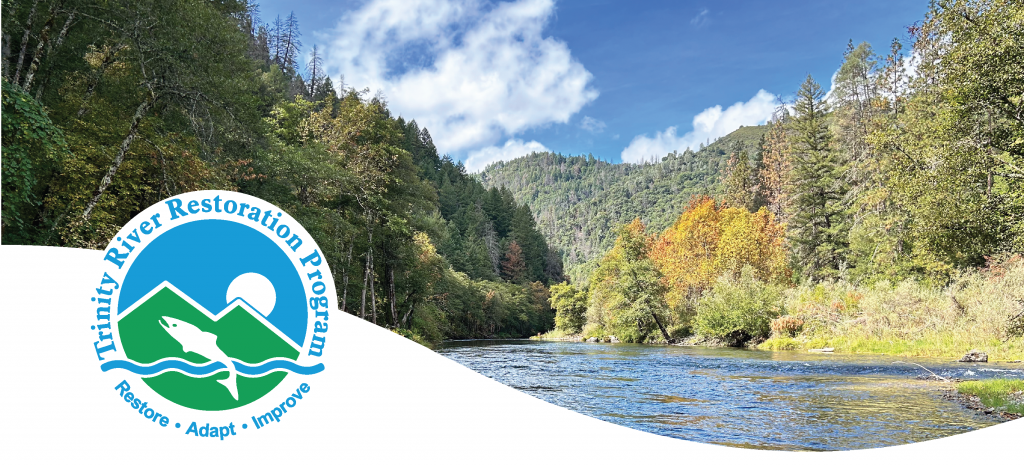
River Riffle Newsletter – October
Contents:
- Trinity River: Current Conditions
- Draft Environmental Assessment Open for Public Comment – New Gravel Augmentation Sites Proposed Beginning Winter 2023/2024
- Program Update: Latest Reports
- Featured Article: New Challenges in the Struggle to Save Pacific Salmon (A story map from the US Fish and Wildlife Service)
- Trinity River Watershed: Animal Spotlight – North American Beaver
- Upcoming Meetings and Events
Trinity River Conditions
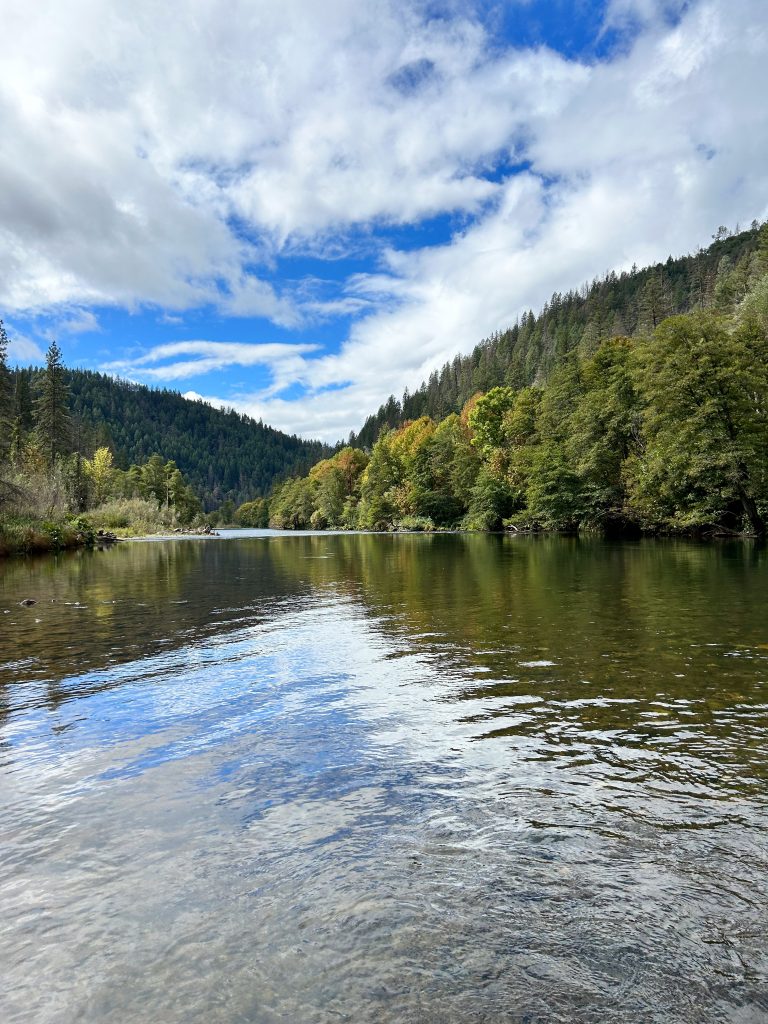
Current Conditions: October
On October 16, operations will begin the ramp down of river releases from summer baseflow of 450 cfs to 300 cfs winter baseflow. Release amounts and times have been announced as the following:
Date Time From (cfs) To (cfs)
10/16/2023 0800 450 400
10/16/2023 1200 400 350
10/16/2023 1600 350 300
Spring-run Chinook are spawning in large numbers this year, although new redd sightings have tapered off in recent weeks, we should start to see a bump in numbers as the fall-run begin to spawn at the end of the month. If you are lucky enough to see a salmon actively spawning, don’t be alarmed if they have visible lesions and/or fungus showing on their bodies. As salmon approach the end of their lives they begin to decompose. Once they have passed they become an important nutrient source for the river and all its inhabitants.
Photo: Trinity River in the near Lewiston. September 26, 2023 [Kiana Abel, Reclamation/TRRP]
Draft Environmental Assessment – Public Comment Period
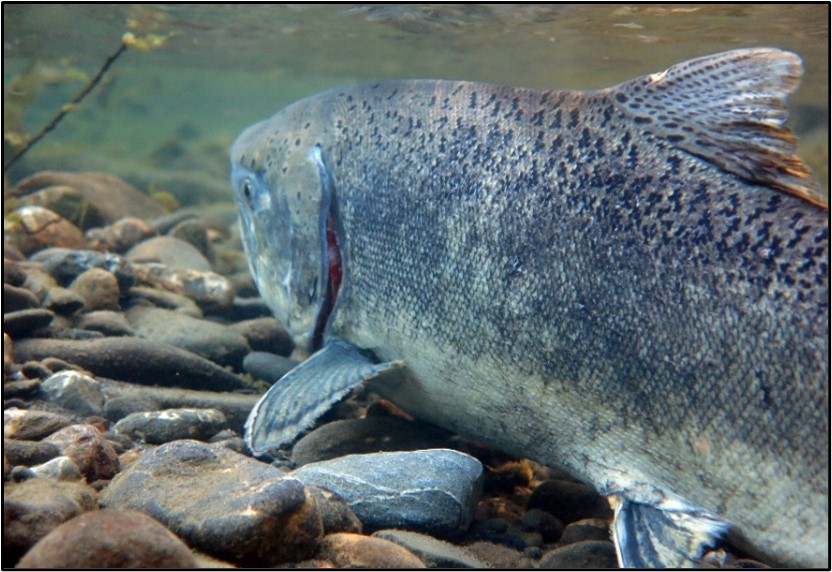
New Gravel & Large Wood Augmentation Sites Proposed Beginning Winter 2023/2024
The Trinity River Restoration Program is beginning a public comment period (October 10, 2023 to November 22, 2023) for public review of the draft Sediment and Wood Augmentation Environmental Assessment/Initial Study (EA/IS). This EA/IS explains the need to develop additional augmentation sites upstream of Indian Creek on the Trinity River mainstem as well as how the actions will be implemented.
Program Update: Latest Reports
Chinook salmon, Coho salmon and fall steelhead run size estimates using mark-recapture methods; 2022-23 season
Kier, M. C., J. Hileman, and K. Lindke. 2023.
Abstract: California Department of Fish and Wildlife’s Trinity River Project conducted tagging and recapture operations from June 2022 through March 2023 to produce run size, angler harvest, and spawner escapement estimates of spring and fall Chinook salmon, Coho salmon, and fall steelhead in the Trinity River basin. Monitoring results inform the Trinity River Restoration Program’s adaptive management decision making process and help evaluate progress toward achieving fundamental objectives outlined in the Integrated Assessment Plan. Additionally, run size estimates are used in annual fishery management decisions, feeding into the Pacific Fishery Management Council’s Klamath River basin fishery regulation and harvest allocation process.
Trinity River Restoration Program – Phase II Review
Inter-Fluve Inc., G. M. Kondolf, and SWCA Environmental and Engineering Inc. 2023.
The purpose of the review document is to summarize the TRRP’s channel rehabilitation, site revegetation, watershed projects, flow management, and gravel augmentation activities through 2021, with an emphasis on the channel rehabilitation projects implemented during Phase 2. The scope of the retrospective review is based upon group interviews, restoration site tours, and review of the existing available literature. This report builds upon an extensive body of literature produced in the TRRP, including lessons learned as part of the review of Phase 1 (Buffington et al. 2014).
This review further includes a discussion of: the perceived strengths and weaknesses of the design and design review process; the TRRP’s responsiveness to the actionable recommendations from the Phase 1 Review; the degree to which the projects as implemented meet the stated design objectives of the project; a critical review of the program’s overall approach to channel rehabilitation recommendations for Phase 3.
Synthesizing 87 years of scientific inquiry into Trinity River water temperatures
Asarian, J. E., K. De Juilio, S. Naman, D. Gaeuman, and T. Buxton. 2023.
The authors acquired river and tributary water temperature data from tribal, federal, state, and local agencies, consulting firms, and universities. The result is a set of stream temperature data for 252 sites at their original temporal resolution (sub-hourly to daily) compiled into a geographically referenced database containing 396,172 daily values, derived from 13 million original measurements. Also compiled, hydrology and reservoir water temperature data in this database. These data were used to analyze existing conditions and develop model scenarios for pre-dam conditions and hypothetical management alternatives. From this effort, conceptual models were updated and used to explore water temperature dynamics on the Trinity River with comparisons made to regulated and unregulated rivers described in the literature.
Trinity River Fall Surveys
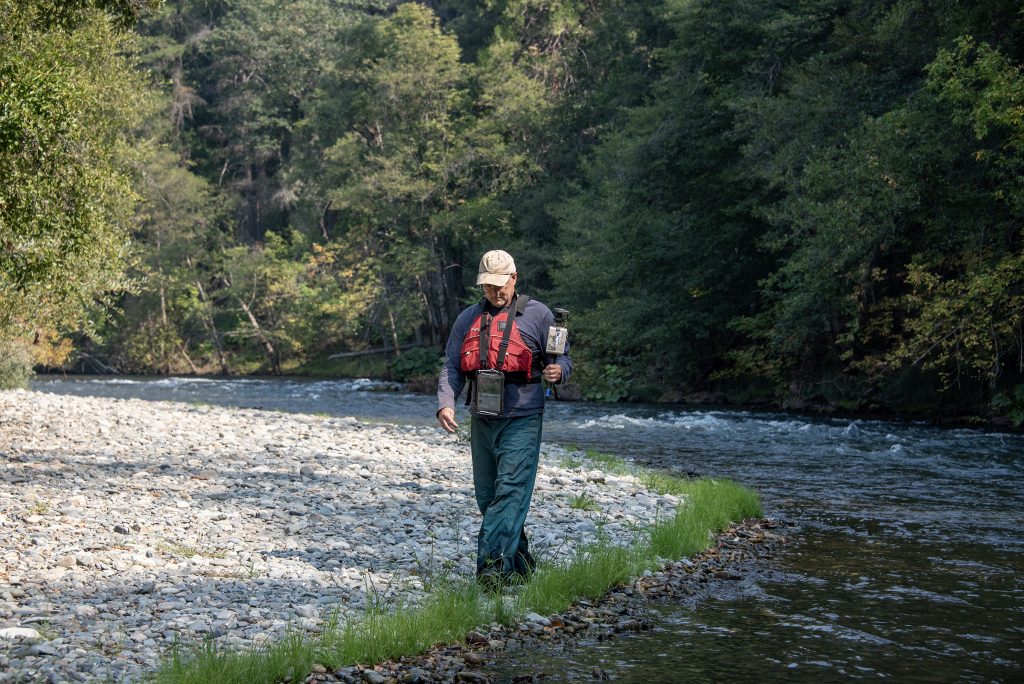
Gravel Bar Mapping
Crews have been mapping gravel bars and fine sediment deposits on the Trinity River these past few weeks. The mapping was last done in 2013, and the updated measurements will indicate progress the Program has made in restoring these features on the Trinity River. Prior research on the Trinity River and elsewhere has shown the quantity of habitat for juvenile salmon rearing increases where sediment bars are present in the river – the more bars, the higher the ability for producing salmon. Results of the survey will be published in the coming months.
[Photo Credit: Michael Burke, Reclamation]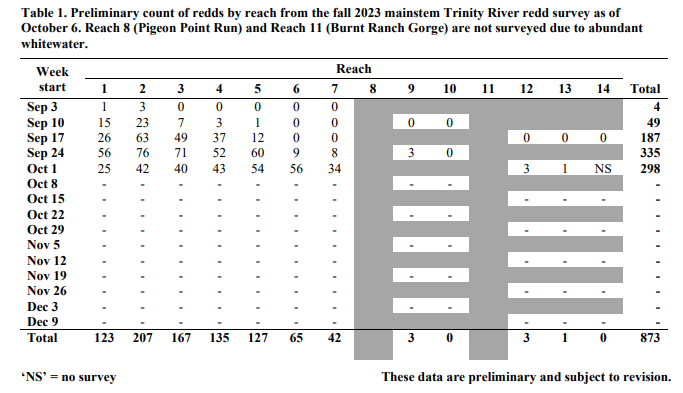
Redd & Carcass Surveys
Survey crews are out monitoring river reaches for redds and carcasses from September through December. Thus far the spring run spawn is early and may have hit its peak with 873 redds counted (Table 1). As of the first week of October this was the most redds observed since monitoring began in 2002. Folks on the river are seeing lots of fish this year, it’s a great time to get out to observe the spring salmon run.
Featured Article
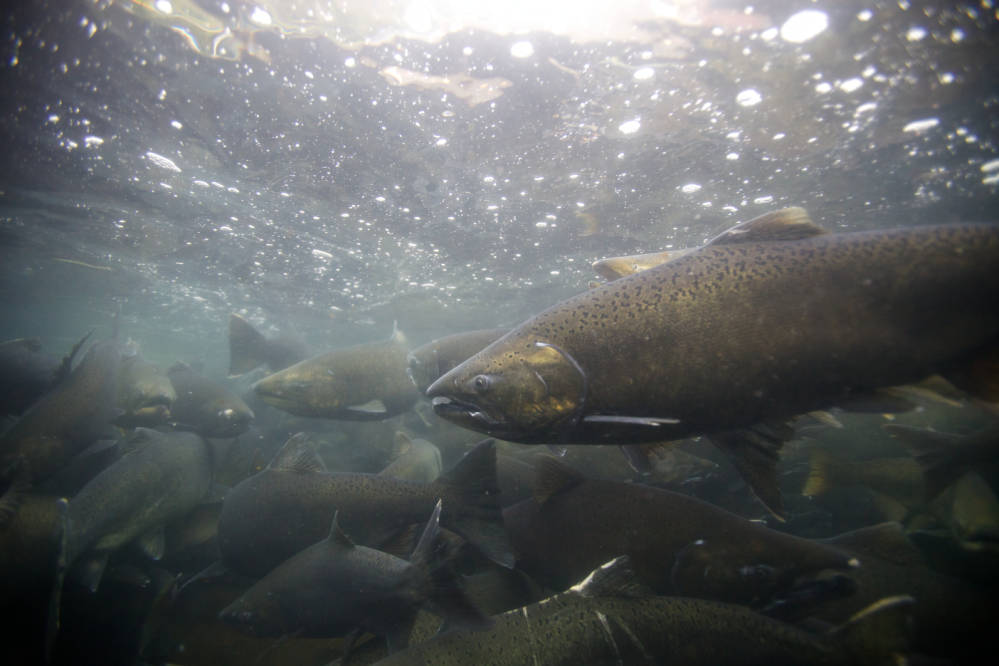
New Challenges in the Struggle to Save Pacific Salmon
August 31, 2023 – US Fish and Wildlife Service
Over the last 150 years, the effects of human activities such as agriculture, mining, damming, logging, and overfishing have led to declines in Pacific salmon species. For decades, efforts have been made to help salmon persist through the challenges they faced. Now climate change is adding to the suite of challenges threatening the long-term viability of salmon and the cultures, traditions and economies of the communities that depend on them. In the Pacific Northwest, the populations of many salmon species have declined significantly, with some protected under the Endangered Species Act. In Alaska, a place with historically healthy salmon runs, the decline of some runs has caused tremendous hardship and concern.
Photo provided by: U.S. Fish and Wildlife Service
Trinity River Watershed: Animal Spotlight
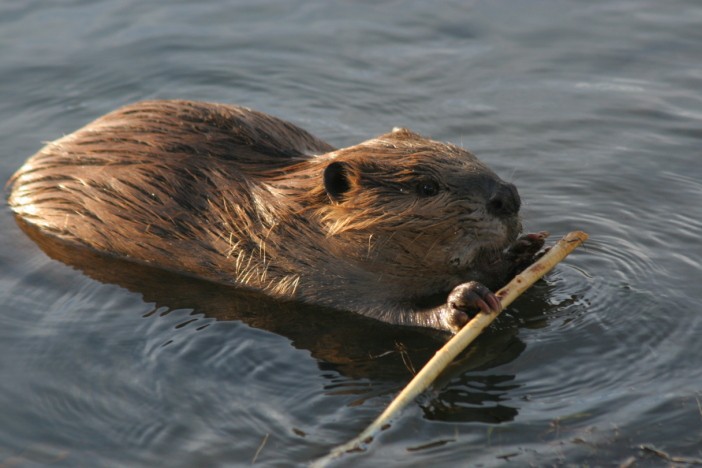
North American Beaver
Castor canadensis
The North American Beaver (Castor canadensis) is a true riparian specialist that is fairly common in the mainstem Trinity River below Lewiston Dam. Beavers attracted some of the first European explorers to the Trinity watershed, notably Jedediah Smith, who along with other mountain men traded with local tribes for beaver pelts in the early 1800s.
Upcoming Meetings and Events
For a full list of events, click to view the TRRP Calendar.
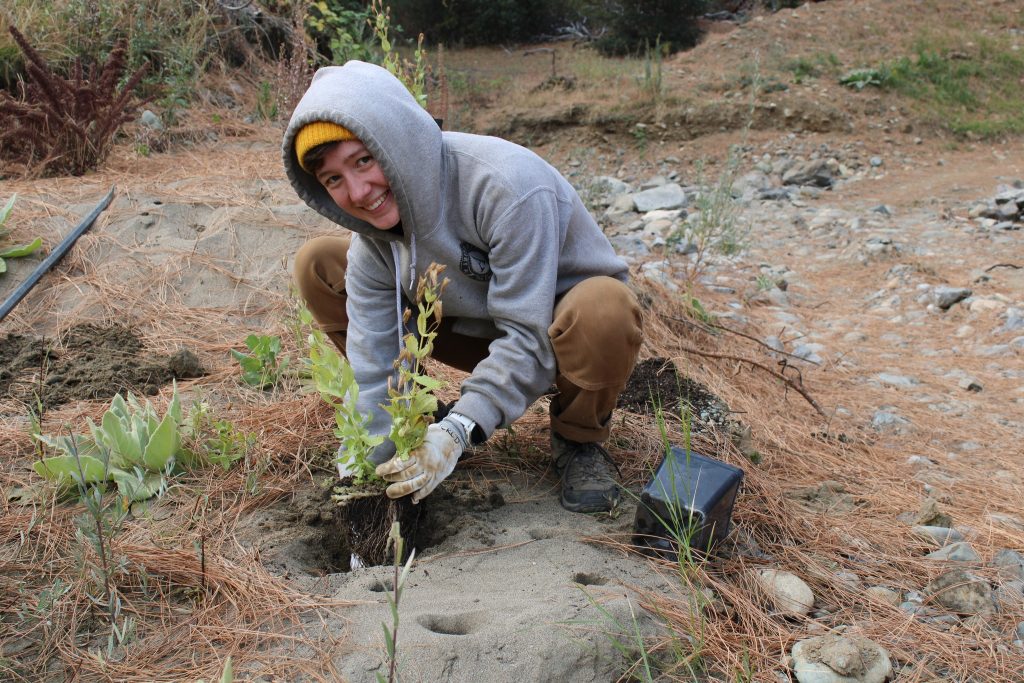
October 21, 10am – Adopt-A-Plot Native Planting Day
Bucktail Restoration Site – Lewiston
The Adopt-A-Plot program is ready to reward those who have taken ownership of a plot of land to weed and now cultivate! If you are interested in adopting a plot for the next growing season, please sign up by calling 530-623-1800 or emailing Kiana Abel at jabel@usbr.gov.
[Photo Credit: Michael Dixon, TRRP/Reclamation]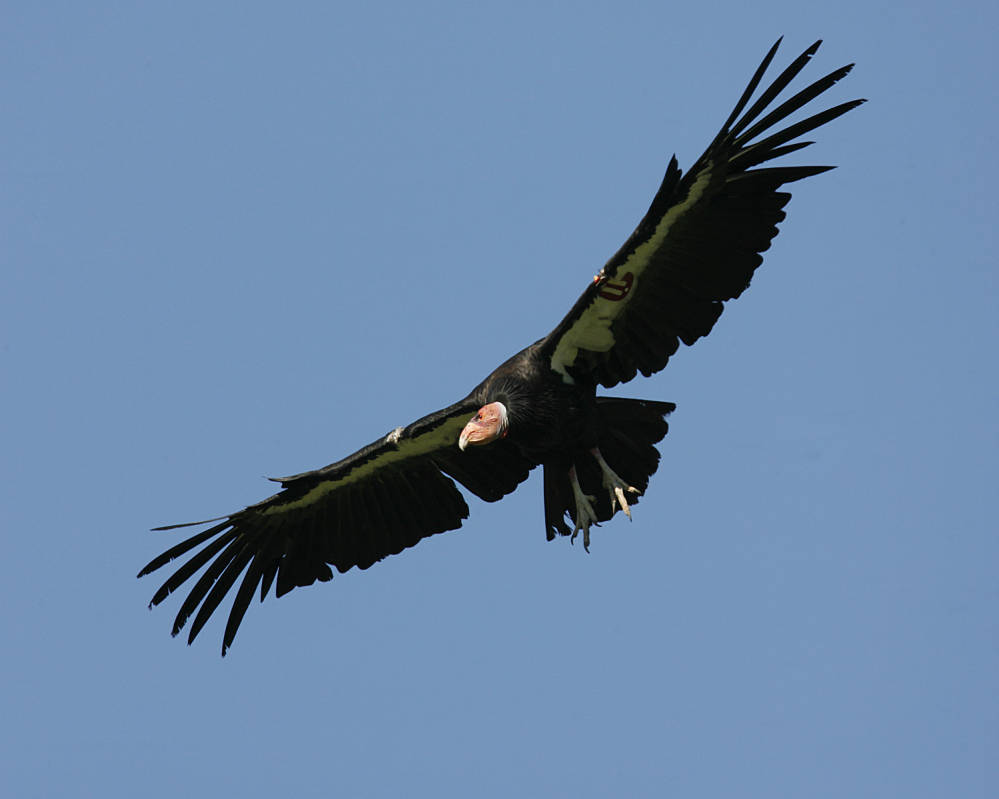
October 25, 6pm – Science on Tap
Trinity County Brewing Company
Chris West from the Yurok Condor Restoration Program will be at the Brewery to talk about the cultural and ecological restoration of the California condor! Chris began working with California condors as an intern with the Ventana Wildlife Society in 1999; leading to his Masters research at Humboldt State University investigating condor vigilance behavior while feeding. He began working for the Yurok Tribe in 2008, working to set up the first reintroduction site in the Pacific Northwest and is now the Manager of the Northern California Condor Restoration Program. We will hold the event outside (weather permitting).
[Photo Credit: US Fish and Wildlife National Digital Library]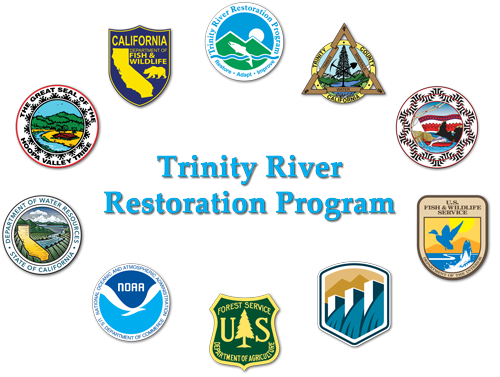
December 6 – 7, All Day – Quarterly TMC Meeting
In Person: Redding, CA Virtual: Teams meeting call-in info TBD
Contact Us
Call Us: 530-623-1800 Email Us: info@trrp.net
